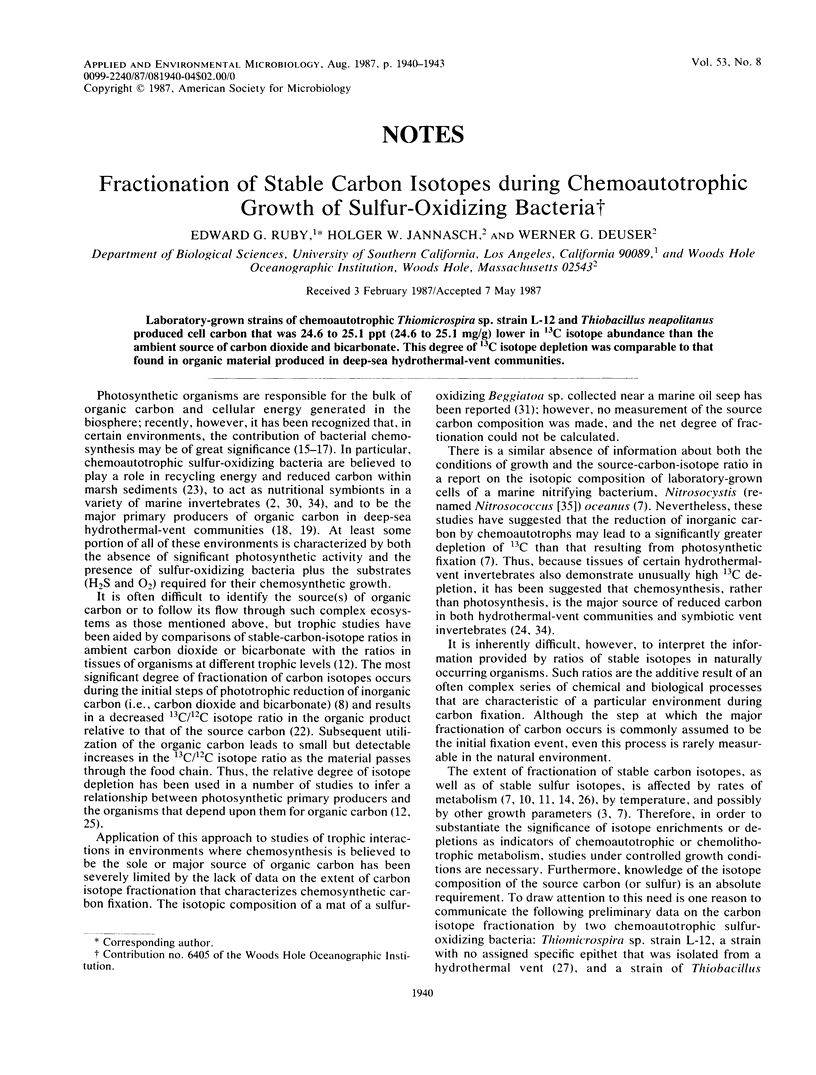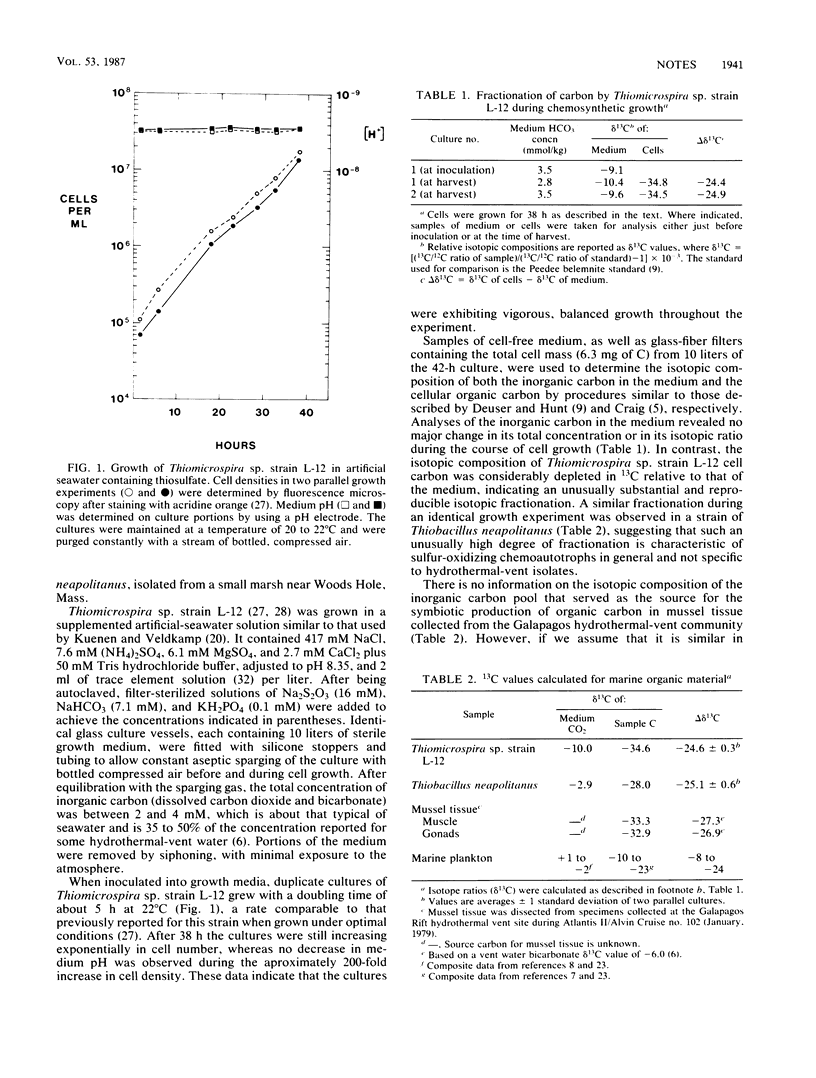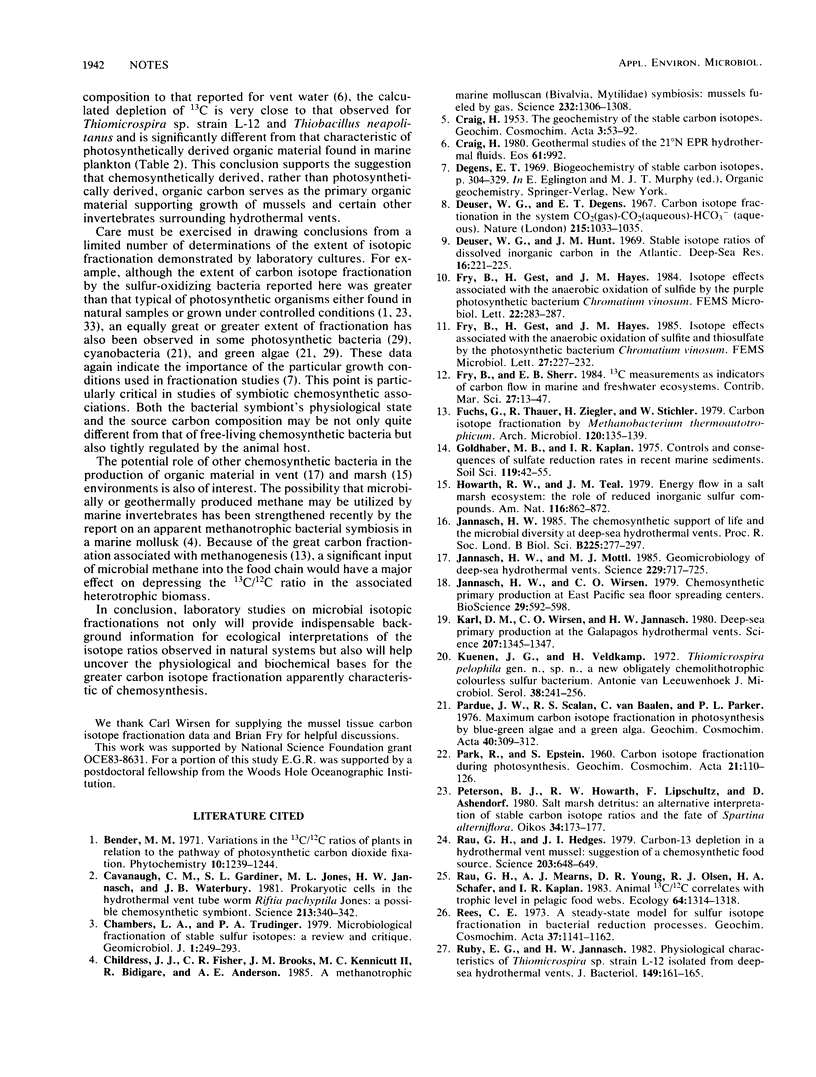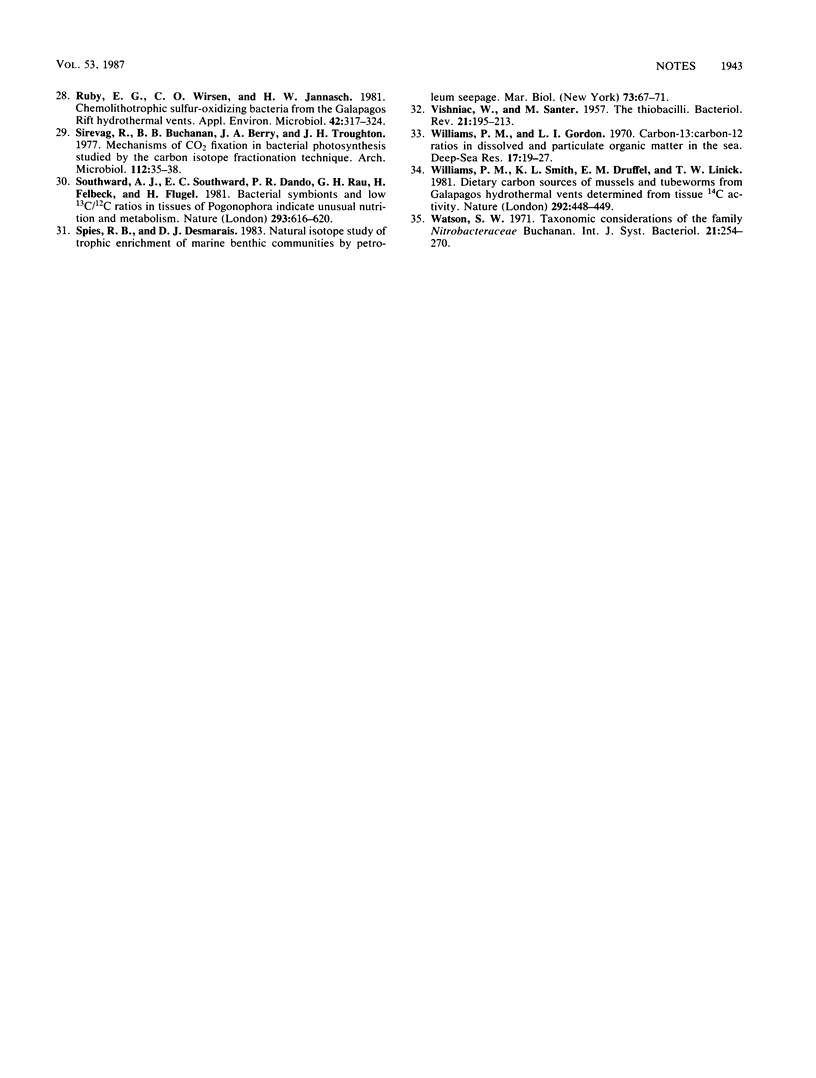Abstract
Laboratory-grown strains of chemoautotrophic Thiomicrospira sp. strain L-12 and Thiobacillus neapolitanus produced cell carbon that was 24.6 to 25.1 ppt (24.6 to 25.1 mg/g) lower in 13C isotope abundance than the ambient source of carbon dioxide and bicarbonate. This degree of 13C isotope depletion was comparable to that found in organic material produced in deep-sea hydrothermal-vent communities.
Full text
PDF



Selected References
These references are in PubMed. This may not be the complete list of references from this article.
- Baker E. L., Jr, Peterson W. A., Holtz J. L., Coleman C., Landrigan P. J. Subacute cadmium intoxication in jewelry workers: an evaluation of diagnostic procedures. Arch Environ Health. 1979 May-Jun;34(3):173–177. doi: 10.1080/00039896.1979.10667392. [DOI] [PubMed] [Google Scholar]
- Cavanaugh C. M., Gardiner S. L., Jones M. L., Jannasch H. W., Waterbury J. B. Prokaryotic Cells in the Hydrothermal Vent Tube Worm Riftia pachyptila Jones: Possible Chemoautotrophic Symbionts. Science. 1981 Jul 17;213(4505):340–342. doi: 10.1126/science.213.4505.340. [DOI] [PubMed] [Google Scholar]
- Fry B., Gest H., Hayes J. M. Isotope effects associated with the anaerobic oxidation of sulfite and thiosulfate by the photosynthetic bacterium, Chromatium vinosum. FEMS Microbiol Lett. 1985;27:227–232. doi: 10.1016/0378-1097(85)90318-0. [DOI] [PubMed] [Google Scholar]
- Jannasch H. W., Mottl M. J. Geomicrobiology of deep-sea hydrothermal vents. Science. 1985 Aug 23;229(4715):717–725. doi: 10.1126/science.229.4715.717. [DOI] [PubMed] [Google Scholar]
- Kuenen J. G., Veldkamp H. Thiomicrospira pelophila, gen. n., sp. n., a new obligately chemolithotrophic colourless sulfur bacterium. Antonie Van Leeuwenhoek. 1972;38(3):241–256. doi: 10.1007/BF02328096. [DOI] [PubMed] [Google Scholar]
- Rau G. H., Hedges J. I. Carbon-13 depletion in a hydrothermal vent mussel: suggestion of a chemosynthetic food source. Science. 1979 Feb 16;203(4381):648–649. doi: 10.1126/science.203.4381.648. [DOI] [PubMed] [Google Scholar]
- Ruby E. G., Jannasch H. W. Physiological characteristics of Thiomicrospira sp. Strain L-12 isolated from deep-sea hydrothermal vents. J Bacteriol. 1982 Jan;149(1):161–165. doi: 10.1128/jb.149.1.161-165.1982. [DOI] [PMC free article] [PubMed] [Google Scholar]
- Ruby E. G., Wirsen C. O., Jannasch H. W. Chemolithotrophic sulfur-oxidizing bacteria from the galapagos rift hydrothermal vents. Appl Environ Microbiol. 1981 Aug;42(2):317–324. doi: 10.1128/aem.42.2.317-324.1981. [DOI] [PMC free article] [PubMed] [Google Scholar]
- Sirevåg R., Buchanan B. B., Berry J. A., Troughton J. H. Mechanisms of CO2 fixation in bacterial photosynthesis studied by the carbon isotope fractionation technique. Arch Microbiol. 1977 Feb 4;112(1):35–38. doi: 10.1007/BF00446651. [DOI] [PubMed] [Google Scholar]
- VISHNIAC W., SANTER M. The thiobacilli. Bacteriol Rev. 1957 Sep;21(3):195–213. doi: 10.1128/br.21.3.195-213.1957. [DOI] [PMC free article] [PubMed] [Google Scholar]


